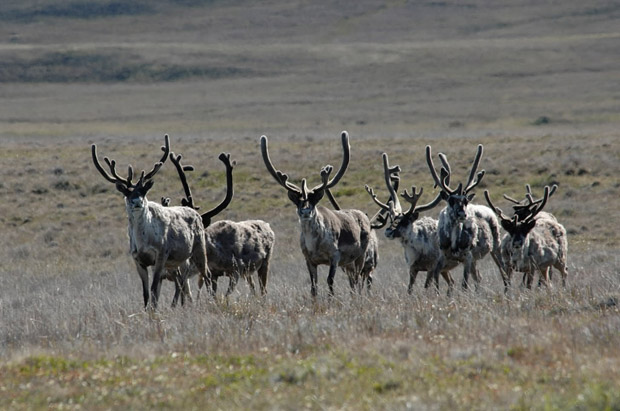OTTAWA – Thousands of wolves stand to be killed in Alberta as part of the federal government’s new plan to sustain caribou in the oilsands area, environmental researchers say.

It’s a calculation that Environment Minister Peter Kent doesn’t contest, even though he wishes he could.
“You are talking about very large numbers,” Kent said in an interview.
“Culling is an accepted if regrettable scientific practice and means of controlling populations and attempting to balance what civilization has developed. I’ve got to admit, it troubles me that that’s what is necessary to protect this species.”
Last month, Environment Canada released its long-awaited draft recovery plan for perilous herds of woodland caribou.
It said that many of the caribou herds in Canada were in satisfactory shape, but in northern Alberta and parts of British Columbia, the situation is dire. Almost all the Alberta herds are classified as “very unlikely” to survive.
And while the report does not dwell on using an extended and intensive wolf cull to protect fragile caribou populations, it’s clearly one of the few options left for the Alberta herds.
It would be a key stop-gap measure while the natural habitat is slowly repaired over the coming decades – likely used in conjunction with other strategies such as allowing increased hunting of deer and moose, who share the caribou habitat.
Environment Canada’s research shows that 100 wolves would need to die for every four caribou calves saved. While Kent would not go through the math to say how many wolves he thinks are at risk in total, he did not disagree with experts’ estimates.
- Roll Up To Win? Tim Hortons says $55K boat win email was ‘human error’
- Bird flu risk to humans an ‘enormous concern,’ WHO says. Here’s what to know
- Halifax homeless encampment hits double capacity, officials mull next step
- Ontario premier calls cost of gas ‘absolutely disgusting,’ raises price-gouging concerns
“It would be an astronomical effort. It would be thousands of wolves in the end. It’s not a very appealing option,” said Stan Boutin, a caribou biologist at the University of Alberta.
Researchers at the Pembina Institute figure that about 6,000 wolves will have to be culled every five years, if a smaller project in the Little Smoky River area is any guide.
There, the dwindling caribou population has been protected – successfully – by shooting wolves from the air, or poisoning them, says Simon Dyer, the institute’s caribou specialist.
In the much larger area at stake in the federal plan, “you would be looking at, over five years, many thousands of wolves,” Dyer said.
Fencing off a protected area for the caribou would normally be an option if the area were smaller, says Kent. But in this case, the region is so large that the cost of fencing is prohibitive.
“There are very few alternatives. The alternatives for example to predator control is building vast fences and maintaining protection, which is economically just not feasible. It is difficult,” he said.
Much of the habitat in question overlaps with the oilsands region – although experts and the federal report alike don’t hold the oilpatch solely responsible for the destruction of the caribou habitat. Rather, they say it’s a culmination of decades, even centuries, of industrial development in the region that has upset the delicate balance caribou need to thrive.
There are signs the private sector is looking for ways to be proactive on preventing further erosion.
But even if the Alberta and federal governments could somehow persuade oil companies to foot the bill of penning caribou, the public may not welcome such an option, said Boutin.
“It’s a direct trade-off, and society and everybody is going to have to make some real hard decisions there, because you cannot, over extensive areas, have both of those activities going on and preserve caribou unless you go to other drastic conservation efforts like predator control or fencing,” he said.
“The fencing issue comes down to: will society buy into what many consider creating a bit of a zoo?”
Public acceptance of a massive and sustained wolf cull is likely to be a tough sell, Kent allows. But he points out that the public has accepted similar strategies elsewhere, such as the moose hunt in Newfoundland and Labrador.
Plus, Kent says First Nations in the area may be able to salvage a little something from the cull by selling wolf fur – a small compensation that the minister recognizes would not even come close to a silver lining.
The federal recovery plan is still in draft form and is in the midst of a 60-day comment period. Some environmental groups are aghast at the plan, saying it would allow resource development of key habitat to continue unhindered.
Others, however, say Ottawa has published a well-researched and nuanced response to a complicated problem that has no easy answers.
Once the recovery plan is made final, provinces will be responsible for devising precise strategies to put the plan into place.



Comments